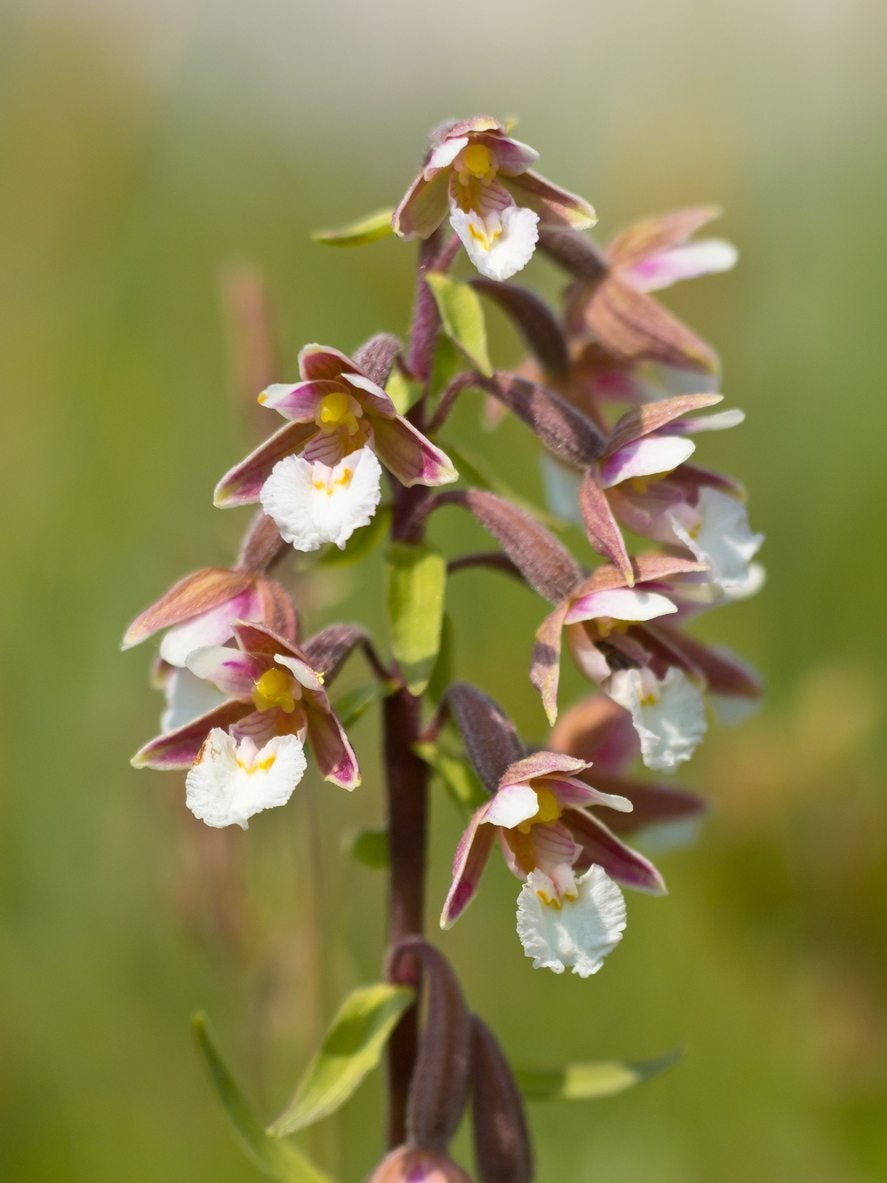What Are Epipactis Orchids – Learn About Epipactis Orchids In The Landscape


What are Epipactis orchids? Epipactis helleborine, often known as just helleborine, is a wild orchid that is not native to North America, but which has taken root here. They can grow in a variety of conditions and settings and are aggressive and weedy in some areas. You can grow them in your garden but be aware that helleborine plants have a tendency to take over.
Helleborine Plant Information
Helleborine is a type of terrestrial orchid that is native to Europe. When it arrived in North America in the 1800's, it thrived, and now it grows wild all over the eastern and central U.S. and Canada, as well as in some places in the west. Helleborine will grow in yards, gardens, along roads, in cracks in the sidewalk, in forests, along rivers, and in swamps. The root system of helleborine is large and fibrous, and the bundle shoots up stems that may be as tall as 3.5 feet (1 m.). The flowers bloom in late summer or early fall with each stem producing as many as 50 small orchid flowers. Each flower has a pouch-shaped labellum, and the colors may range from bluish purple to pink-red or greenish brown.
Growing Wild Epipactis Orchids
In some places, helleborine has become an unwanted weed because it grows so well and aggressively in a variety of conditions. Epipactis orchids in the landscape are undesirable for many, but these are pretty flowers and if you can control the growth, they make a nice addition. One bonus of growing these orchids is that they are low maintenance and will thrive without much care. Light soil is best, with good drainage, but helleborine will tolerate other types of soil. They are especially at home in wet conditions, such as along a pond edge or stream. Full sun is ideal, and some shade is acceptable but may reduce the number of blooms. Just keep in mind that Epipactis orchids can proliferate quickly, growing to form wide colonies and becoming invasive. They grow readily from even small fragments of root in the soil, so one way to manage your population is to grow them in pots sunk into the bed. If you do choose to clear an area of helleborine, make sure you get out the entirety of the root system, or it will likely come back. NOTE: Before planting anything in your garden, it is always important to check if a plant is invasive in your particular area. Your local extension office can help with this.
Sign up for the Gardening Know How newsletter today and receive a free copy of our e-book "How to Grow Delicious Tomatoes".

Mary Ellen Ellis has been gardening for over 20 years. With degrees in Chemistry and Biology, Mary Ellen's specialties are flowers, native plants, and herbs.